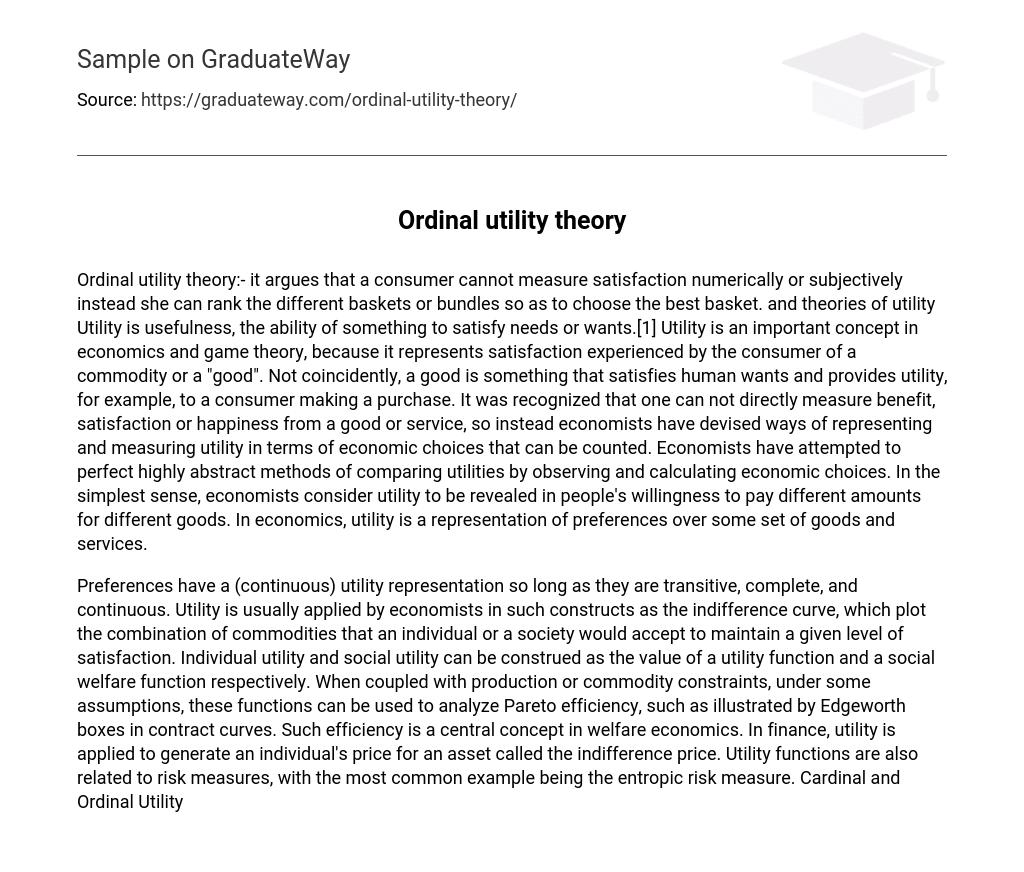Ordinal utility theory: it argues that a consumer cannot measure satisfaction numerically or subjectively instead she can rank the different baskets or bundles so as to choose the best basket. and theories of utility Utility is usefulness, the ability of something to satisfy needs or wants.
Utility is an important concept in economics and game theory, because it represents satisfaction experienced by the consumer of a commodity or a “good”. Not coincidently, a good is something that satisfies human wants and provides utility, for example, to a consumer making a purchase. It was recognized that one can not directly measure benefit, satisfaction or happiness from a good or service, so instead economists have devised ways of representing and measuring utility in terms of economic choices that can be counted.
Economists have attempted to perfect highly abstract methods of comparing utilities by observing and calculating economic choices. In the simplest sense, economists consider utility to be revealed in people’s willingness to pay different amounts for different goods. In economics, utility is a representation of preferences over some set of goods and services.
Preferences have a (continuous) utility representation so long as they are transitive, complete, and continuous. Utility is usually applied by economists in such constructs as the indifference curve, which plot the combination of commodities that an individual or a society would accept to maintain a given level of satisfaction.
Individual utility and social utility can be construed as the value of a utility function and a social welfare function respectively. When coupled with production or commodity constraints, under some assumptions, these functions can be used to analyze Pareto efficiency, such as illustrated by Edgeworth boxes in contract curves. Such efficiency is a central concept in welfare economics. In finance, utility is applied to generate an individual’s price for an asset called the indifference price. Utility functions are also related to risk measures, with the most common example being the entropic risk measure.





